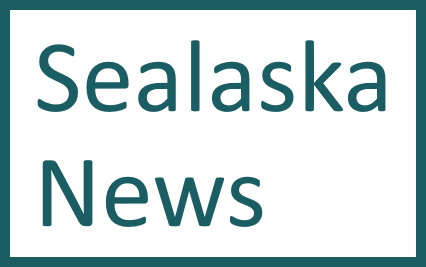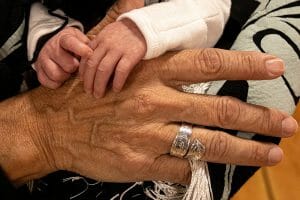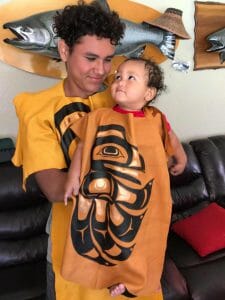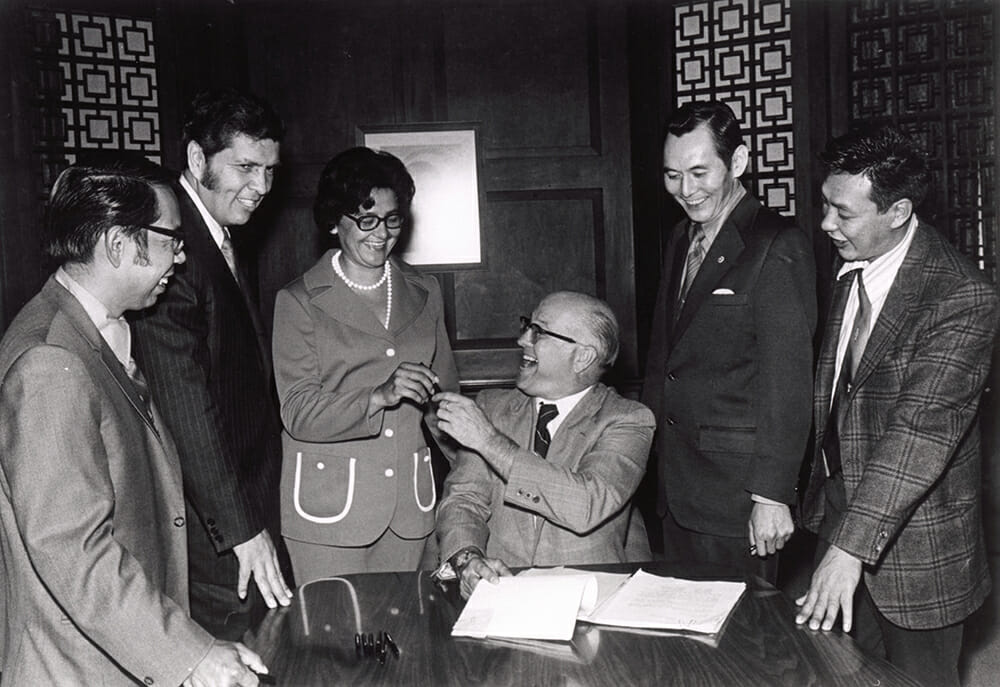Blood Quantum Q and A
Tuesday, April 12, 2022
News Search
20 results found
Posted 11/11/2023
Posted 11/11/2023
Two incredible individuals, Anthony Mallott and Jaeleen Kookesh, have announced they are leaving their roles at Sealaska. As they move on to pursue new opportunities, we take this moment to reflect on their contributions to our company and communities. Anthony Mallott’s tenure at Sealaska has been nothing short of transformative. His leadership as CEO has been marked by a commitment to our…
Source
Posted 2/8/2023
Posted 2/8/2023
Join Sealaska in Portland this spring! Connect with fellow shareholders, learn more about Sealaska and enjoy Alaska Native art workshops at Sealaska’s Portland Informational Fair this spring. Shareholders, bring your families and join us Saturday, March 4, 11 a.m. – 3 p.m. at the DoubleTree Portland for food, festivities and fun, including live arts workshops and door prizes!
Source
Posted 11/7/2022
Posted 11/7/2022
Sealaska published a special edition Shareholder Newsletter. The following was included. In 2019, Shyla Germain, who works in Shareholder Relations at Sealaska, was sitting in the lobby of the company headquarters talking to people about enrolling to become a Sealaska shareholder. It was during Celebration, and many Tlingit, Haida and Tsimshian people filled the streets of downtown Juneau.
Source
Posted 4/21/2022
Posted 4/21/2022
Resources
This page hosts a collection of published articles by Sealaska, news organizations, academics, researchers, podcasters and others on the issue of blood quantum. Sealaska Blood Quantum Information 1. Academic Research Original Shareholders of Sealaska and their Descendants, Estimates and Projections, by Barry Edmonston, 2005 (PDF)
...
Posted 4/12/2022
Posted 4/12/2022
Welcome!
Identity and belonging are some of the most deeply felt, emotional issues for Native people. Many of us – regardless of whether we grew up immersed in our culture and on our lands – have questioned whether we are “Native enough.” Maybe it’s because we don’t speak the language. Maybe it’s because our skin is light. Maybe it’s because we aspire to live a...
Posted 4/12/2022
Posted 4/12/2022
How Many Shareholders?
Based on estimates produced by Sealaska, there are approximately 15,000 descendants of original shareholders who have less than one-quarter Alaska Native blood quantum. This estimate is based on comparing the number of shareholders currently in Sealaska with the number of enrolled tribal citizens of Central Council of the Tlingit and Haida Indian Tribes of Alaska, along...
Posted 11/4/2021
Posted 11/4/2021
ANCSA Corporations and Tribes
ANCSA Corporations and tribes serve many of the same constituents – both have a mission to improve the lives of our shareholders and tribal citizens.Relationship can be collaborativeSupporting traditional ways of life (subsistence)Sustainable rural communities; employmentEducationCultural and language preservationLand into trustCelebration 1998There can be disagr...
Posted 11/3/2021
Posted 11/3/2021
About ANCSA
The Alaska Native Claims Settlement Act of 1971 (ANCSA) was a new approach by Congress to federal Indian policy.Sealaska directors sign the Sealaska articles of incorporation in 1972 with Assistant Secretary of the Interior Harrison Loesch. Pictured L to R: Clarence Jackson, Jon Borbridge, Jr., Marlene Johnson, Harrison Loesch, Dick Kito, Leonard KatoWith reservations in the Lower...
Posted 9/30/2021
Posted 9/30/2021
Sealaska is teaming up with the Central Council of the Tlingit & Haida Indian Tribes of Alaska to distribute its $4.2 million in Coronavirus Aid, Relief and Economic Security Act (CARES Act) funding from the federal government to eligible shareholders. The application will be live beginning Monday, Oct. 4, 2021. Tlingit & Haida has generously contributed an additional $1.8 million to make the…
Source
Posted 9/28/2021
Posted 9/28/2021
Sealaska held a special showing of the documentary Tlatsini – Journey of the Taku Kwaan on Monday, Sept. 27. If you missed this opportunity, Sealaska shareholders can watch at their convenience before Thursday, Sept. 30. About Tlatsini – Journey of the Taku Kwaan The documentary is about a canoe journey on the Taku River. The Taku River runs between British Columbia to the Alaska…
Source
Posted 2/4/2021
Posted 2/4/2021
Sealaska is seeking qualified shareholders to become endorsed nominees for the Sealaska Board of Directors. There are three incumbent candidates and two open seats this year. At a meeting of its Governance and Nominations Committee on Thursday, Feb. 4, the committee approved a set of criteria for candidates who choose to participate in the endorsement process.
Source
Posted 12/20/2020
Posted 12/20/2020
It is the holiday season, and a great opportunity to support local, Native-owned businesses, artists and entrepreneurs. Sealaska invited its shareholders, descendants and others in the Alaska Native community to share their businesses and artistry with our audiences so we can help promote them during an otherwise very difficult year. We were flooded with submissions from all sorts of artists…
Source
Posted 11/3/2020
Posted 11/3/2020
In a resolution adopted Friday, Oct. 30, Sealaska’s board of directors voted to add an additional $2.5 million to its scholarship endowment fund to meet the increased demand for support from students receiving postsecondary education on a part-time basis. Sealaska just started providing scholarships to part-time students for the 2019–2020 academic year, and the demand was significant.
Source
Posted 3/17/2020
Posted 3/17/2020
Sealaska created an option for shareholders to receive information electronically. We announced the new option to Make the Change in January 2020. To encourage participation, Sealaska is offering prizes in 2020 to shareholders who opt-in to Go Green. The first round of prizes encouraged shareholders to make the change by an early bird deadline of March 13, 2020. Sealaska shareholders who made…
Source
Posted 3/6/2020
Posted 3/6/2020
Educational leaders and members from the business community from across the state gathered in Anchorage Feb. 27–28 for the Alaska CAN! Conference. Their goal was to come together and discuss issues related to post secondary education and barriers to supporting the state’s economy. Sealaska Board Chair Joe Nelson participated on a panel titled “Language Revitalization…
Source
Posted 1/29/2020
Posted 1/29/2020
We have created an option for shareholders to receive information electronically from Sealaska. If you choose this option, the following information will be sent to your inbox rather than your mailbox! HOW TO GO GREEN To opt-in for electronic delivery of information (Go Green) you need a MySealaska.com account. If you already have an account, click here to log in and go to your…
Source
Posted 7/22/2019
Posted 7/22/2019
On March 12, 2019, the Alaska Native Vietnam Veterans Land Allotment Act was approved via the Dingell Act. Alaska Native Vietnam era veterans who served between August 5, 1964, and December 31, 1971, are eligible to apply for a land allotment. The Bureau of Land Management (BLM) has established a website with additional details and FAQs, found at this link. Before applications can be accepted…
Source
Posted 10/26/2018
Posted 10/26/2018
Be on the lookout for a Fall 2018 distribution announcement on Friday, Nov. 2 on Sealaska.com, your email inbox or on our official Facebook page. Prepare to Receive a Distribution Payment Using MySealaska.com There are two ways to receive a Sealaska distribution payment: The fastest and most efficient way to receive a distribution is by direct deposit. Not only does it…
Source
Posted 5/7/2018
Posted 5/7/2018
The bereavement program is a new benefit that can finally be added by Sealaska as a result of the company’s success and steady growth over the last five years. Sealaska’s board of directors announced its approval today of a shareholder bereavement benefit to provide support for its shareholders after the loss of a loved one. This program is a result of Sealaska’s growing financial strength…
Source
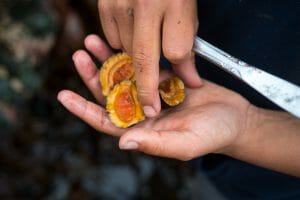 Q: What is blood quantum?
Q: What is blood quantum? 


